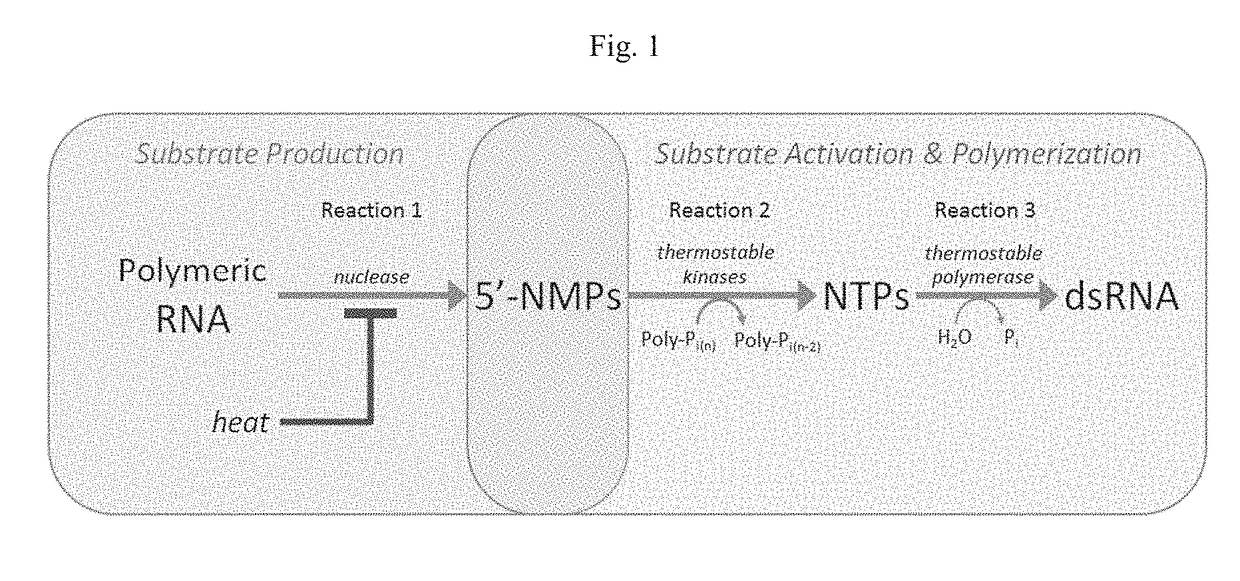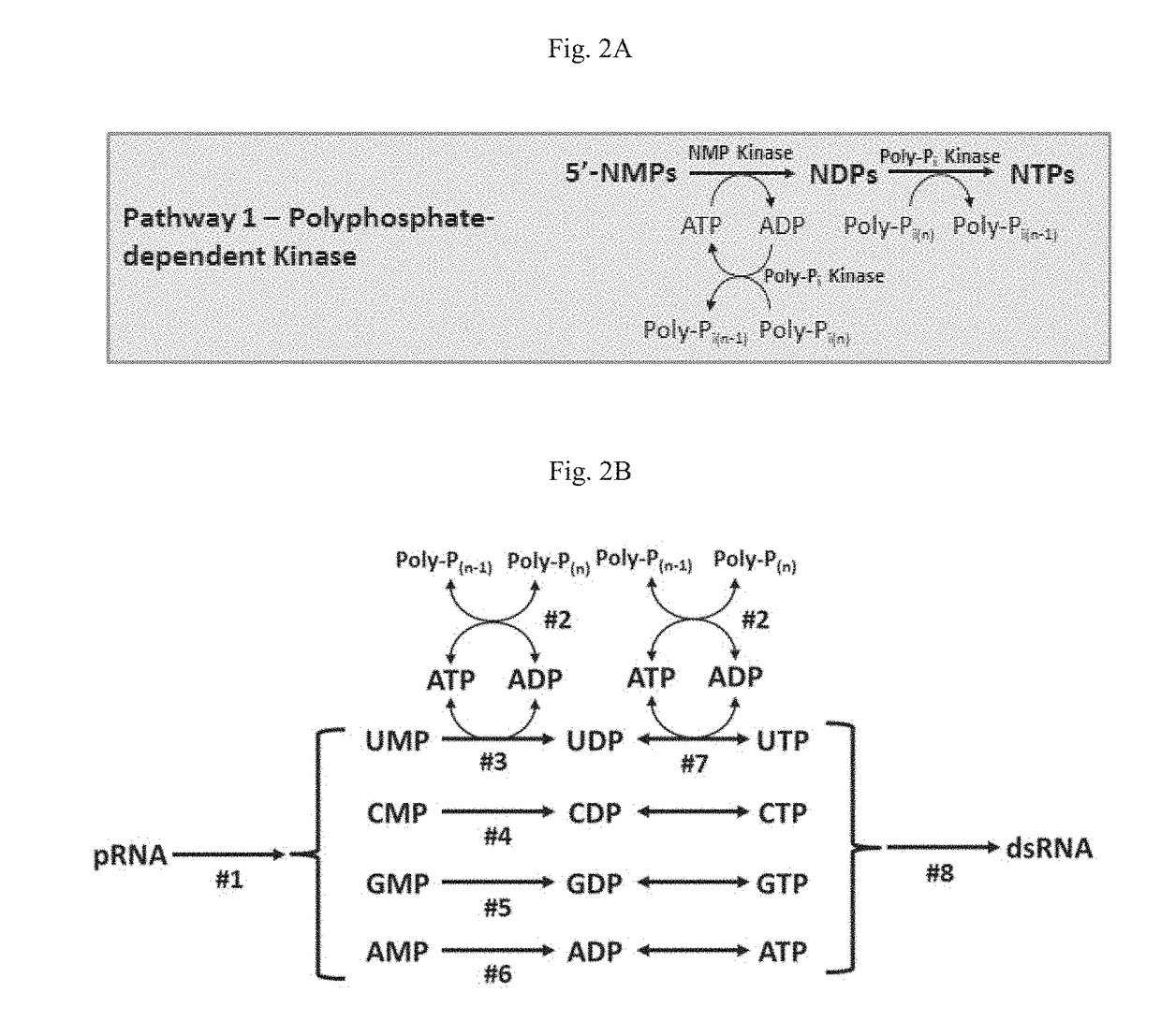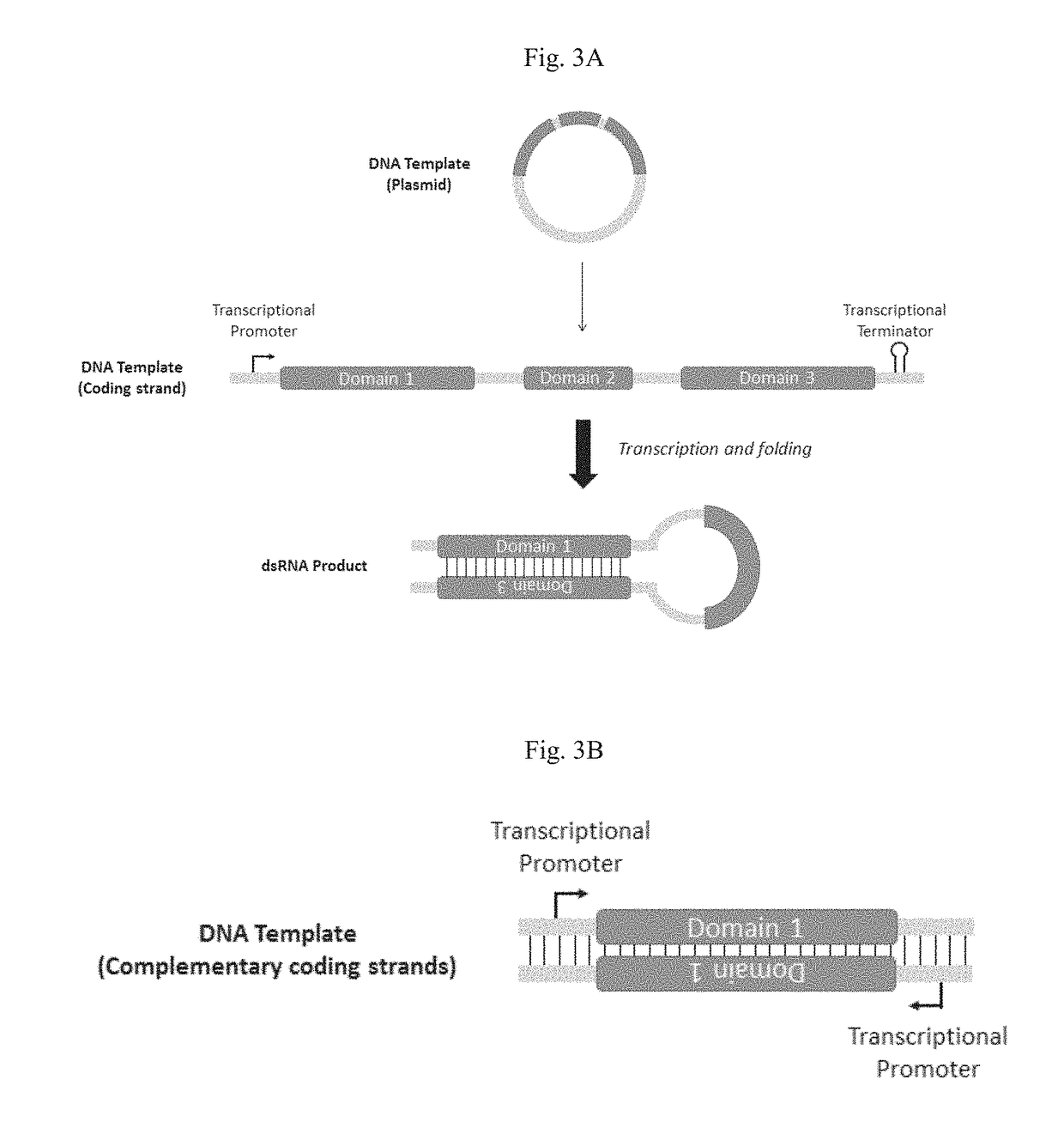Cell-free production of ribonucleic acid
a ribonucleic acid, cell-free technology, applied in the direction of enzymology, microorganism lysis, transferases, etc., can solve the problem that the production of rna at scales enabling widespread commercial application is currently cost prohibitiv
- Summary
- Abstract
- Description
- Claims
- Application Information
AI Technical Summary
Benefits of technology
Problems solved by technology
Method used
Image
Examples
example 1
Nuclease Downselection
[0173]To identify the optimal nuclease(s) for digesting lysate RNA, a series of screening experiments were performed using commercially-available enzymes chosen based on their ability to generate 5′-NMPs or oligonucleotides. The activity of these enzymes was first determined using purified E. coli RNA and reaction conditions recommended by the manufacturer, where RNA depolymerization was monitored by the release of acid-soluble nucleotides. Under these conditions, four nucleases demonstrated depolymerization activity over background. The endonucleases Benzonase and RNase A, which served as positive controls, yielded immediate conversion of RNA to acid-soluble nucleotides (FIG. 5A). Treatment of RNA with the exonucleases P1 and RNase R yielded a time-dependent conversion of RNA to acid-soluble nucleotides, with RNase R reaching nearly 100% depolymerization in 2 hours. The remaining nucleases (terminator exonuclease, RNase III and RNase T) did not produce detecta...
example 2
[0216]Thermostable PPK2 enzymes were codon-optimized for expression in E. coli, synthesized, and cloned into pETDuet-1 (Novagen). Plasmids were then transformed into GL16-170. To generate the Control strain, empty pETDuet-1 plasmid was transformed into GL16-170. After overnight preculture in 5 mL Lysogeny Broth (LB), strains were cultivated in 1 L LB at 37° C. until cell densities reached an OD600 of approximately 0.5. Cultures were then briefly chilled on ice, and PPK2 expression was induced by adding isopropyl thiogalactopyranoside (IPTG) to a final concentration of 0.25 mM. Post-induction, cultures were grown at 20° C. for approximately 16 hours. Cultures were harvested by centrifugation, and the cell pellets stored at −80° C. Lysates were produced by thawing frozen pellets, resuspending in 2 pellet volumes 150 mM MOPS-NaOH pH 7, and homogenizing using 4 passes through an EmulsiFlex C3 homogenizer (Avestin) at 15,000 psi. Lysates were then clarified by centrifugation at 15,000×g ...
example 3
[0220]Thermostable C. aerophila PPK2 was then used to supply ATP for cell-free production of dsRNA from NMPs, ADP, and HMP. Cell-free dsRNA synthesis reactions were performed with a mixture of six E. coli lysates individually overexpressing the kinases detailed in Table 18.
TABLE 18Kinases used to produce dsRNA from NMPs and HMP.Substrate(s)Source OrganismGeneAMPThermus thermophilusadkCMPThermus thermophiluscmkGMPThermotoga maritimagmkUMPPyrococcus furiosuspyrHADP, CDP, GDP, UDPAquifex aeolicusndkAMP, ADP, HMPCaldilinea aerophila DSM 14535ppk2
[0221]First, lysates detailed in Table 18 were combined in equal volumes on ice. Pre-chilled solutions of manganese chloride (MnCl2), magnesium sulfate (MgSO4), and sodium hexametaphosphate (HMP) were added to final concentrations of 0-2.5 mM, 30 mM, and 1 mM, respectively. The lysate mixture was then heat-inactivated by incubation in a pre-heated 70° C. thermocycler for 15 minutes. To initiate the reactions, heat-inactivated lysates were combin...
PUM
| Property | Measurement | Unit |
|---|---|---|
| Temperature | aaaaa | aaaaa |
| Time | aaaaa | aaaaa |
| Energy | aaaaa | aaaaa |
Abstract
Description
Claims
Application Information
 Login to view more
Login to view more - R&D Engineer
- R&D Manager
- IP Professional
- Industry Leading Data Capabilities
- Powerful AI technology
- Patent DNA Extraction
Browse by: Latest US Patents, China's latest patents, Technical Efficacy Thesaurus, Application Domain, Technology Topic.
© 2024 PatSnap. All rights reserved.Legal|Privacy policy|Modern Slavery Act Transparency Statement|Sitemap



